
I winced a bit as I watched my partner lower the spinning tines into the soil in our garden. Dark, brown earth immediately turned up behind him as he walked next to the lumbering rototiller. “That’s years of hard work down the drain,” I thought. Or is it?
This fall, we made the tough choice to till our no-dig garden.
Why Go No-Dig or No-Till?
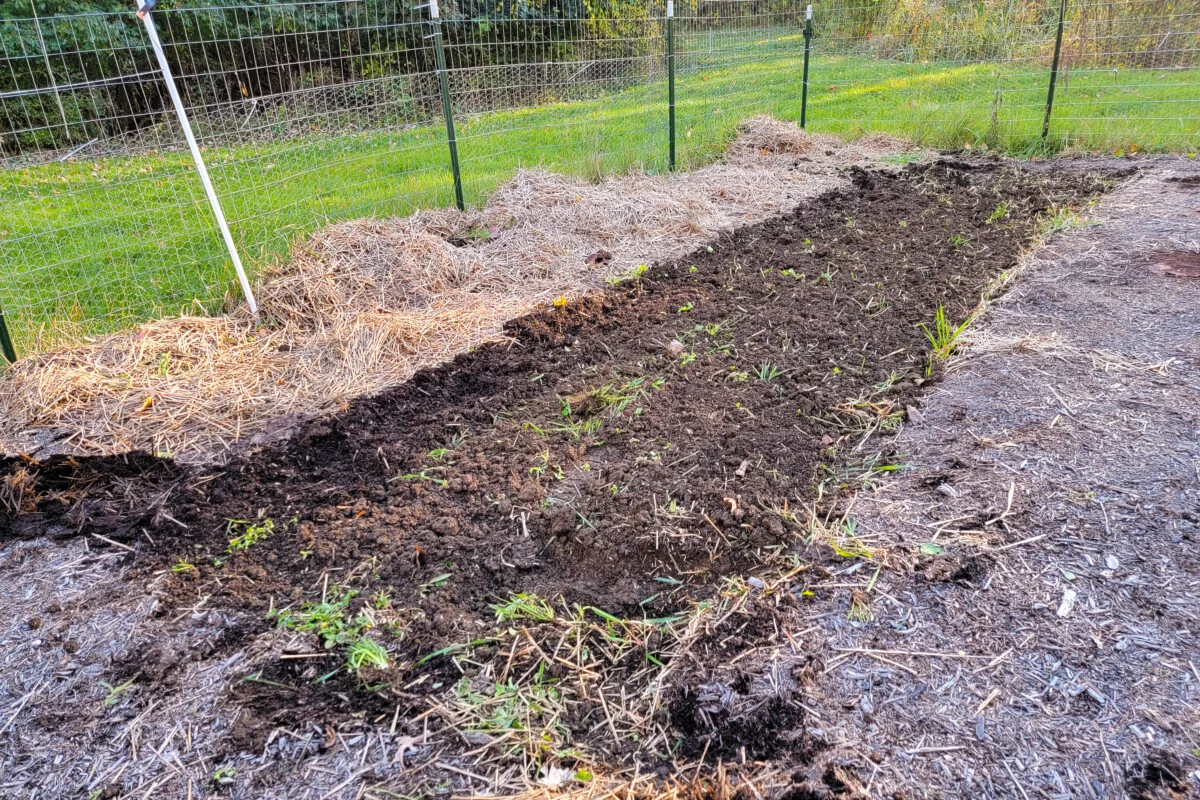
There’s a lot to be said in favor of no-dig gardening, and here at Rural Sprout, we’re big fans. Improved soil, better water retention, higher yields, fewer weeds and, of course, the big one – no back-breaking digging!
Here are some of our most popular articles on the no dig method of gardening:
6 Reasons To Start A No Dig Garden + How To Get Started
12 Common Mistakes That No-Dig Gardeners Make
How to Go No-Dig In Raised Beds & Improve Your Soil
20 Vegetables We Grow In Our No Dig Garden
One of the main benefits of no-dig gardening is improving the microbiome beneath your feet. Just below the soil is a living universe filled with beneficial bacteria, microbes and fungi. All of these work symbiotically with the plants growing in the soil, specifically the fungi.
You’ve probably heard a lot about the benefits of using mycorrhizae in your garden these past few years.
When you opt for a no-dig garden, you’re allowing those naturally occurring mycorrhizae to grow and create a massive underground network that significantly enhances the size and efficiency of your garden plants. Trust me; it’s well worth the effort.
Our Journey with No-Dig Gardening
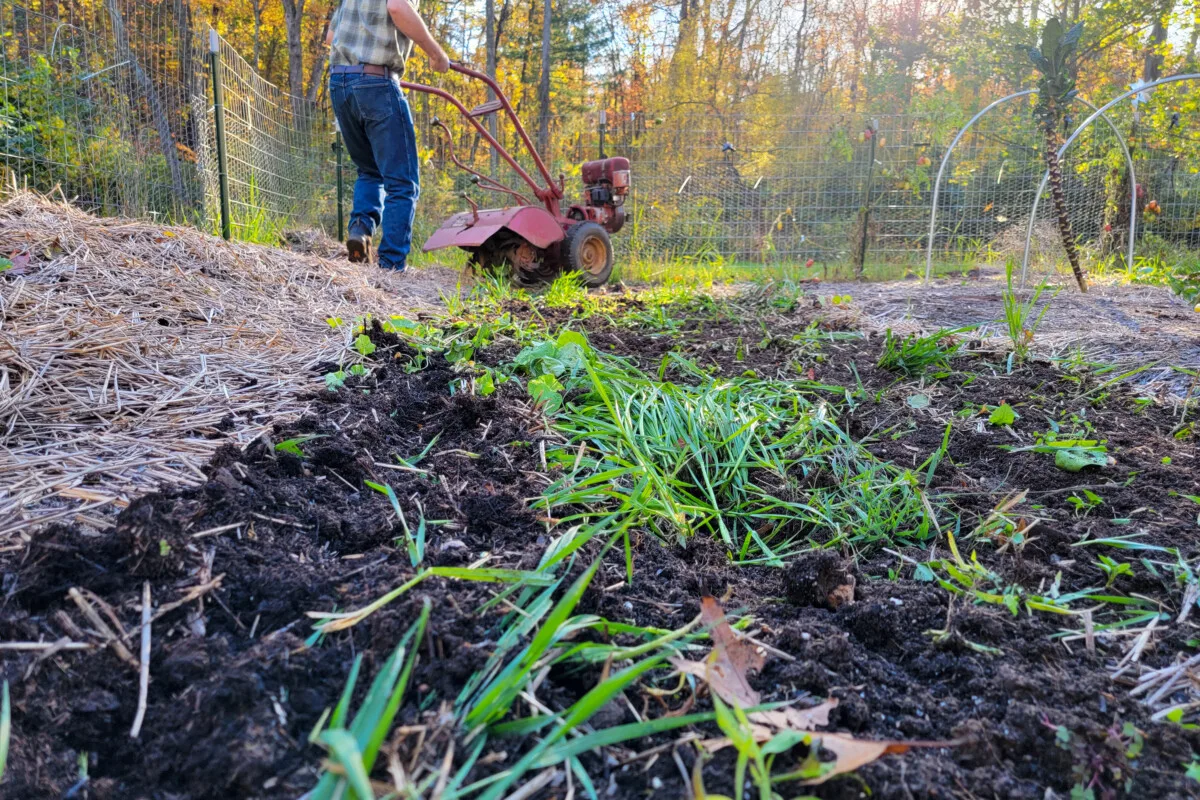
So, several years ago, we decided to give no-dig gardening a try. Our soil has never been great. It’s very heavy and poor draining. We decided to bring in several loads of mushroom compost to put directly on top of our existing soil, trusting everything would break down and improve over the years.
Within the first season, we noticed healthier, larger plants.
We had fantastic yields, and the weeds were minimal because we put down a layer of mulch.
The first year was great, and I was thinking – this is it – we’ve found the gardening holy grail.
But the next year, we started to have problems. The soil was still looking good, and the plants were large and healthy, but somehow, word had gotten around to the local pest population that we had gone no-dig and had the choicest plants in the neighborhood to nibble on.
No biggie. We knew beneficial insects would help control pest populations. But we also needed to break out the neem oil and the Bacillus thuringiensis about midsummer to keep pests from overwhelming the garden. It was a lot of work, but worth it in the end.
Then Came This Year
I’m still a little traumatized by this year.
From the word go, we were battling pests. No sooner had my radishes sprouted leaves when something was nibbling on them. When I put my eggplant seedlings out, the leaves were riddled with lacey holes from flea beetles. And the cabbageworms were insane. At one point, I think there was more caterpillar poop than kale accumulating in my garden.
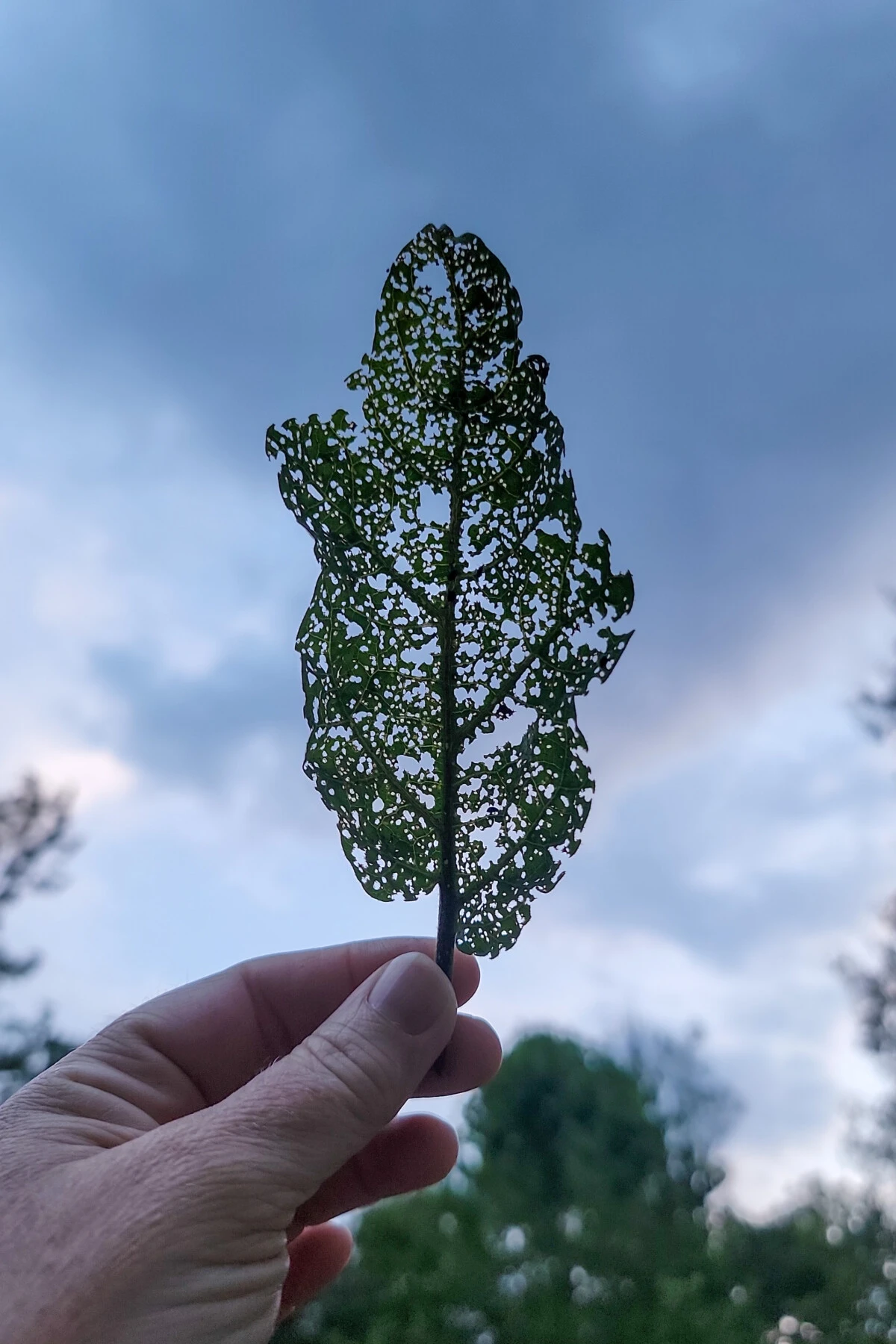
I kept remarking to my sweetheart that these same pests weren’t nearly this bad last year.
What was going on?
This past season, my gardening day usually started with a walk around each row with my garden sprayer filled with B.t.
I anxiously watched my poor eggplant seedlings, knowing that flea beetles usually don’t cause enough damage to kill off a healthy plant.
But they kept at it. All season long. Nibble, nibble, nibble.
I couldn’t explain why the pests were so bad this year; they were much worse than last year.
And that’s when it dawned on me.
Duh. We didn’t till last year. So, most of my pest population wintered over in the soil and returned stronger this year. Hmm, that’s a problem I didn’t foresee with no-dig gardening.
Good Bugs vs. Bad Bugs – a Delicate Balance
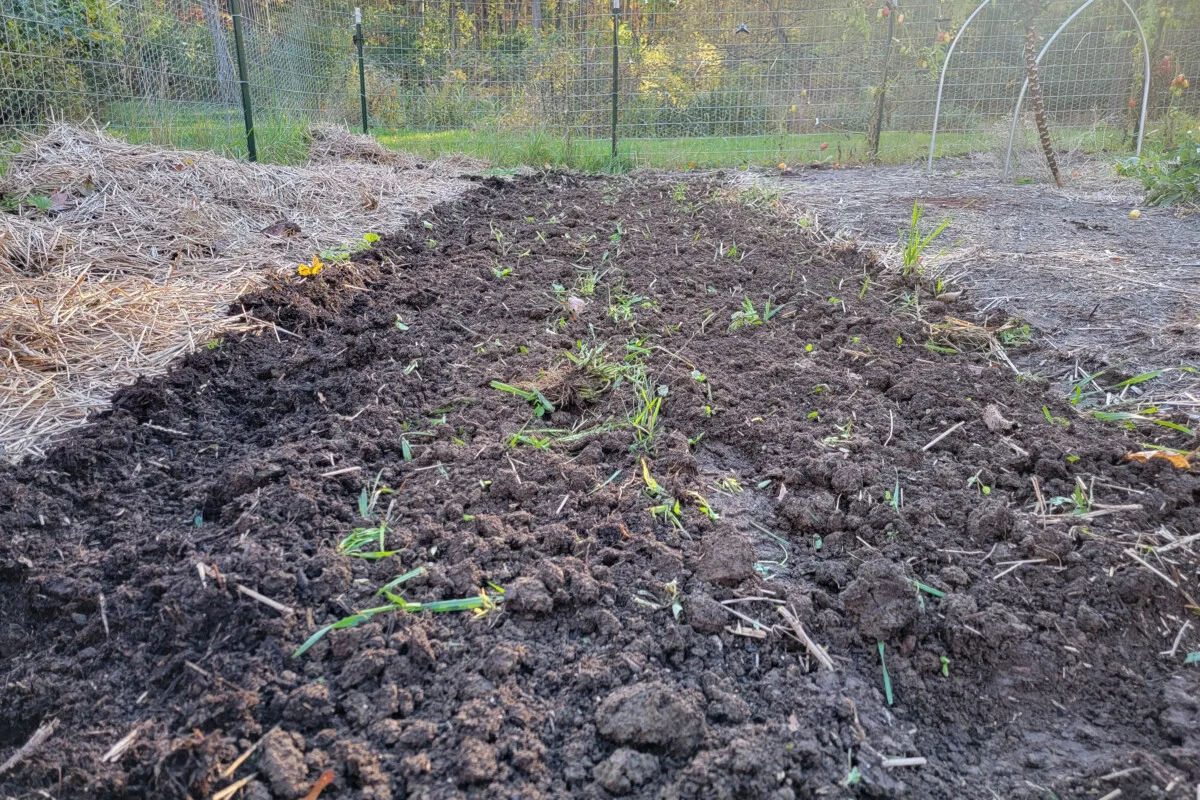
If you’re like most organic gardeners, you know all about the diminishing insect populations – the good and the bad. Insects, on the whole, are in decline, and that’s especially bad news for pollinators.
Over the past decade, there’s been a major shift in pest control methods, especially in the organic gardening community.
We’re much more careful about what we do to mitigate pest damage. We may plant trap crops to entice pests away from the crop we want to eat. Or we may introduce a predatory insect species to help keep a particular garden pest in check, such as using lacewings to keep aphids in check. Or, for the truly adventurous, whipping out your UV flashlight and heading out to the garden at night to hunt tomato hornworms.
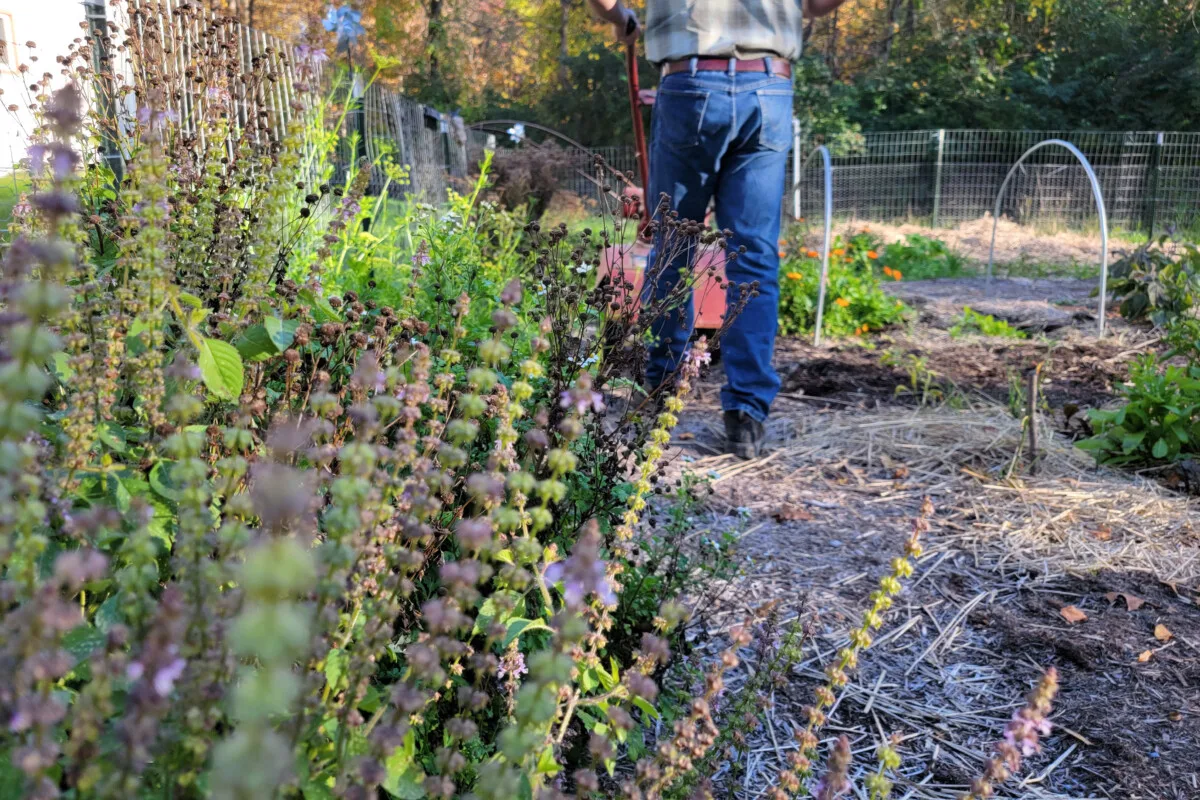
For many, our relationship with insects is changing. Myself included. I was willing to share my garden.
In Which I Scare the Chickens
And share we did.
I mean, sure, I can handle sharing my kale. It’s kale, after all. So be it if I don’t get to eat any myself this summer because it’s riddled with holes from imported cabbageworms. I can wait to eat kale in late fall and early winter when the cold has forced all the bugs underground. It tastes better after a frost anyway.
And I guess it’s okay if the squash vine borers decimate my zucchini…then my pattypan squash…then my Kubota pumpkins…then our carving pumpkins, and finally the cucumbers.
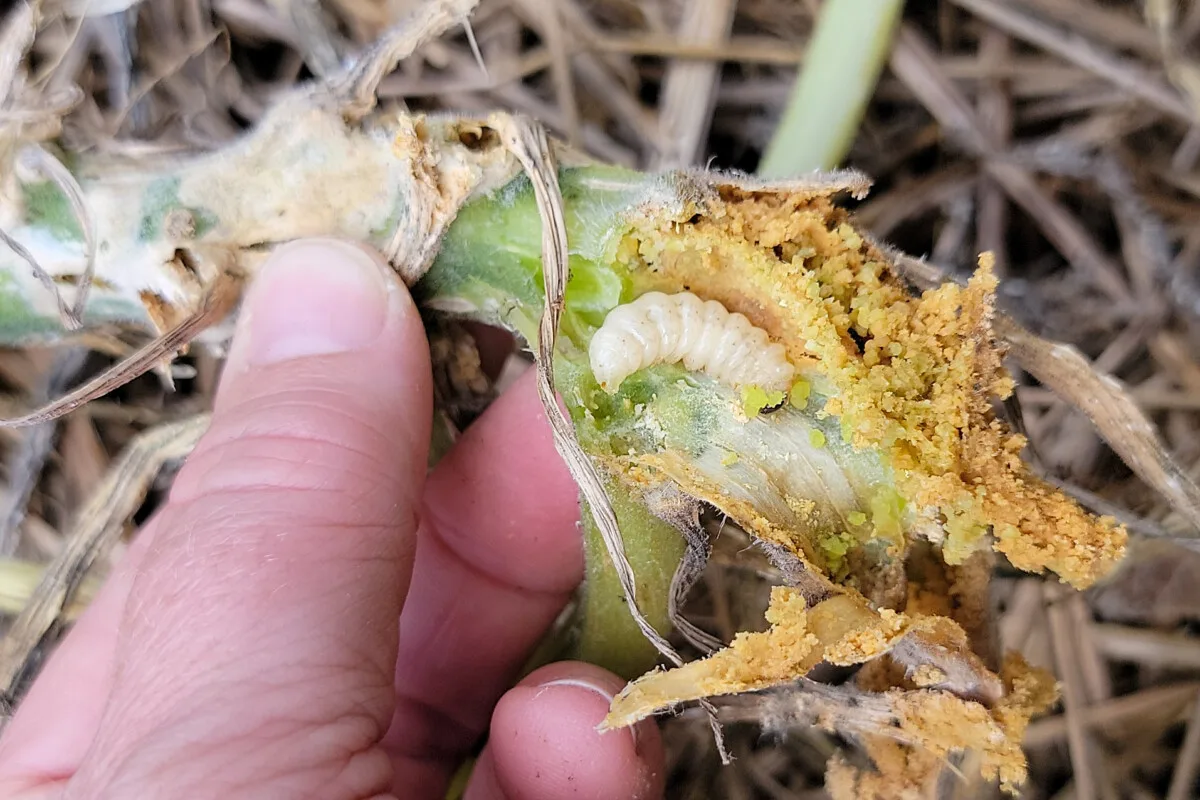
But it was when my eggplant finally recovered from all the flea beetle damage and started bouncing back that things got ugly. It was early October before it put out blooms, ready to fruit
…and then we had our first frost.
I looked down at my ruined eggplant and yelled to no one in particular, “This is so freaking stupid!”
The chickens went squawking to hide under the lilac bush.
Standing next to the poor wilted eggplant, I thought, what on earth are we doing all this work for?
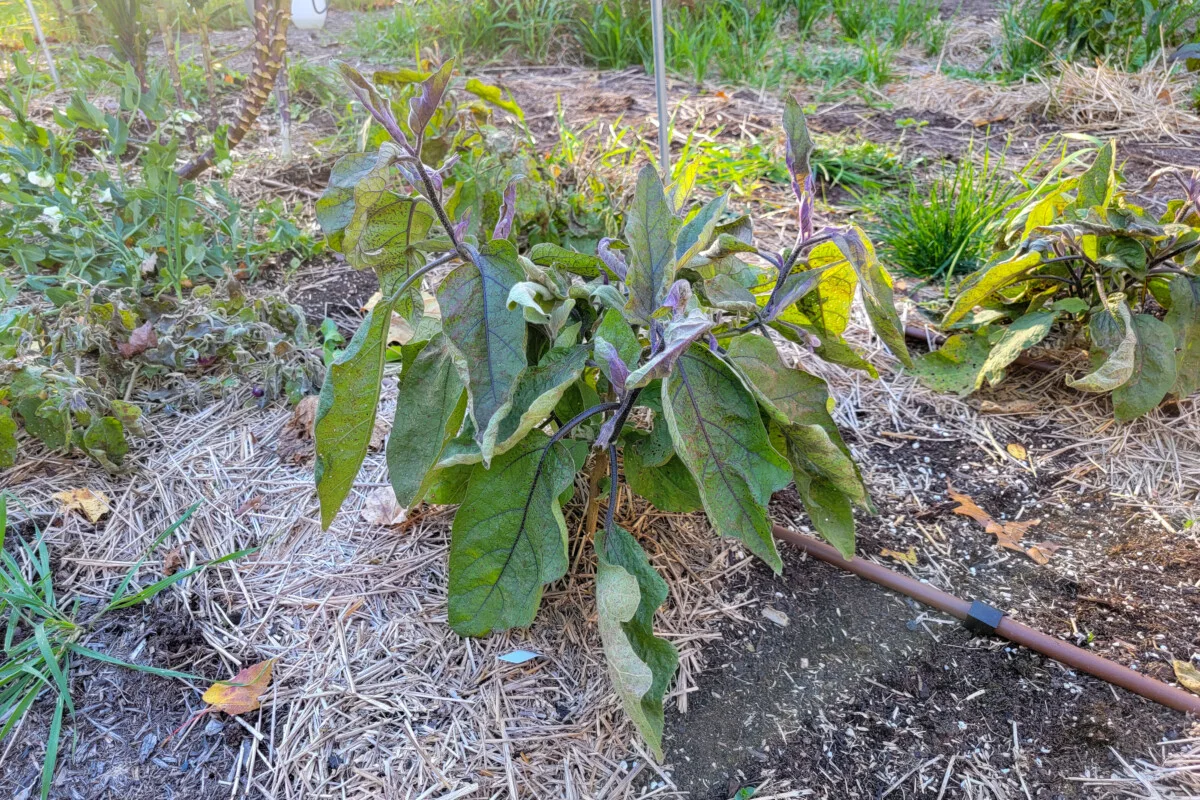
Am I feeding the bugs or our family?
For the past several years, I’ve been so worried about the insect population in my garden that I completely lost sight of what all this hard work is for – feeding us.
Meanwhile, I’ve been so concerned with my impact on the environment that I was okay with smaller and smaller returns on my effort in the garden. At this point, it was clear we were putting a lot of work into hosting an all-you-can-eat buffet for the local garden pests while our pantry shelves were lacking in canned veggies.
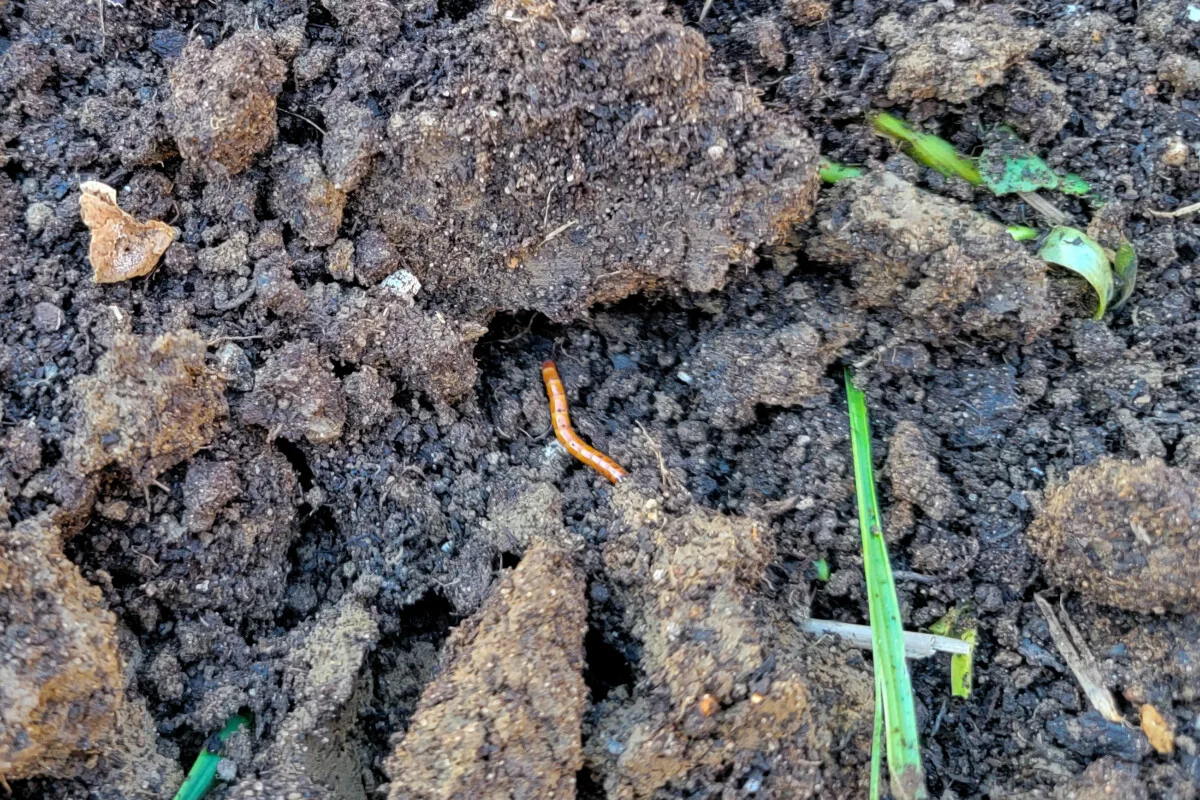
I remembered that, hey, my family and I are a part of the environment, too.
So, rather than reaching for a large bottle of some nasty chemical, we decided to till up the garden after the first hard frost. We’ll till a couple more times before the snow flies, and then again in the spring.
This will unearth and destroy all the bugs – good and bad – hanging out in our soil. It’s a way of keeping the garden pest population in check that I’m comfortable with. Because at the end of the day, I’m trying to grow an all-you-can-eat buffet of veggies for our family, not the bugs.
Moving Forward – Giving up No-Dig for Good?
We have no plans to give up no-dig gardening.
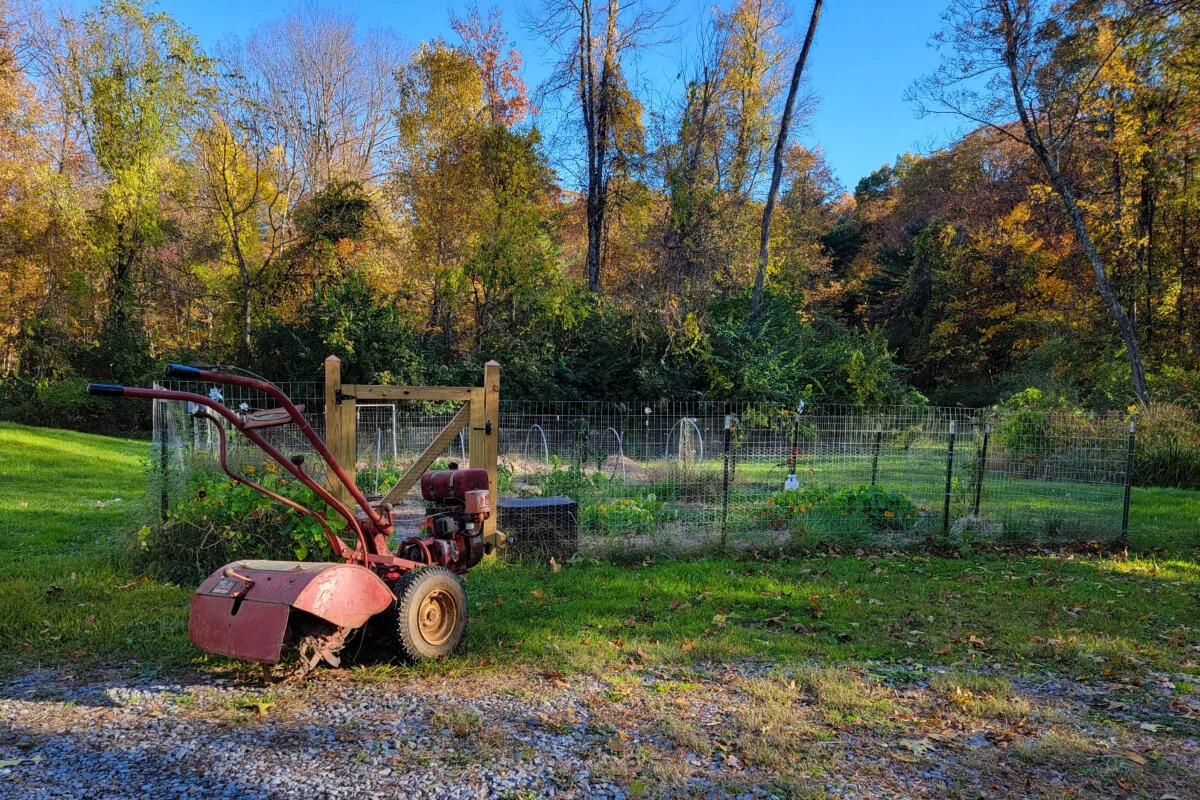
We’ve noticed the benefits in the size and general health of our plants. We have fewer weeds because we mulch and let that mulch break down in the soil. Our crumby soil is now beautiful, dark, loamy earth. The drainage has improved greatly. And with each passing year, my body is grateful for the lack of digging and wrestling with that rototiller.
Of course, my sweetie, who is a natural-born tinkerer, looks mournfully at the rototiller each spring and fall before reminding me that he did a complete carburetor rebuild on it just for me. (Gosh, just what I always wanted, thanks, sweetie!)
I think, like with most gardening methods, we’re just going to adjust it to work for us. We’re hoping to lessen the pest load in our soil this year. If it rebuilds again in subsequent years, we’ll probably end up tilling again as needed. But for now, the plan is to continue our no-dig garden as though we hadn’t tilled. Yes, we’ll probably have to inoculate with mycorrhizae, but that’s okay.
It’s important to remember if it isn’t working for you, reevaluate and find something that does. There are no gardening police out there waiting to descend on you and issue a ticket. This is supposed to be an activity that’s good for you, not one that makes you pull your hair out and scare the chickens.

Get the famous Rural Sprout newsletter delivered to your inbox.
Including Sunday ramblings from our editor, Tracey, as well as “What’s Up Wednesday” our roundup of what’s in season and new article updates and alerts.

